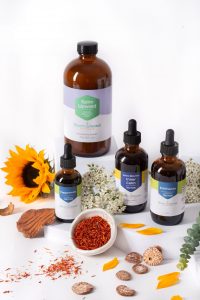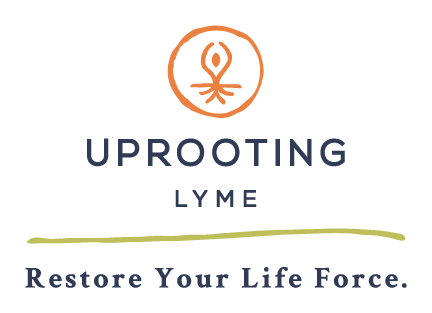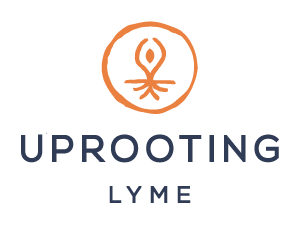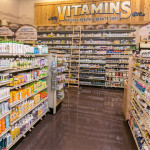
Lyme Disease Antibiotics: What is the best option for you?
Antibiotics for Lyme disease is the common course of treatment. They are beneficial and effective in some cases, yet some people find them ineffective, harmful, or have difficulty tolerating the side-effects. If you have concerns about taking pharmaceutical antibiotics for Lyme disease, know that it is not the only option.
As holistic practitioners who specialize in Lyme disease and complex illness, we often work with people who are seeking alternatives to antibiotics for Lyme disease. The right combination of herbal remedies, either in conjunction with, or instead of, pharmaceutical antibiotics is an effective, safe, and successful form of treatment.
This article will focus on some of the issues you may face with antibiotics treatment for Lyme disease. We’ll also introduce the herbal approach that we use to treat Lyme disease, which helps our patients minimize or avoid excessive use of antibiotics. From the perspective of natural medicine, using herbal alternatives to antibiotics for Lyme disease leads to better health outcomes without the complications – when used correctly!
 Lyme Disease Antibiotics Side-Effects
Lyme Disease Antibiotics Side-Effects
Medicines such as Doxycycline, the most often prescribed antibiotic for Lyme disease, are both a blessing and a hazard. Like most antibiotics, when used occasionally (perhaps once per decade, ideally) they are incredibly effective and can wipe out an infection swiftly. Yet when we depend on antibiotics too often, they may lose their effectiveness and take a greater toll on our bodies.
Following are some of the serious and common health issues that can arise from excessive antibiotic use.
Persister Bacteria
The Borrelia spirochetes that cause Lyme disease are notoriously tough, and brilliant concealers. In response to the presence of antibiotics they can convert themselves into a protected spore that is not easily penetrated by the antibiotics. In chronic Lyme disease, they may also form biofilm. Biofilm is a colony-matrix where Borrelia can exist as spores and as active spirochetes inside a protective film unreachable by the antibiotics. All this is to say that antibiotics alone, even very potent long-term protocols, may not be enough.
The best treatment involves the use of herbs, enzymes, and other natural substances in conjuction with the antibiotics, rather than antibiotics alone. To learn more about how to combine pharmaceutical antibiotics with natural remedies, check out Integrating Herbs With Antibiotics for the Best Treatment Outcomes.
Antibiotic resistance among disease-causing microbes is a global health crisis. Some of the most promising solutions include herbs and essential oils such as the ones we use to treat Lyme disease.
Microbiome Loss of Diversity
Recently, scientific research revealed the fun fact that there are many times more microbes in our body than there are human cells! The teeming microbial ecosystem that we host is what’s known as our microbiome. It is intricately tied to our health in ways that science is only beginning to understand. For example, certain microbes aid digestion, supports a healthy immune response, and are related to positive mood and brain function.

As in larger ecosystems, the diversity of our personal microbiome is a key to optimal health and resilience against stressors. Antibiotics reduce diversity and can also make us more susceptible to different infections than the one you’re targeting by taking antibiotic treatment for Lyme disease.
Gut Dysfunction
As mentioned above, antibiotics alter our body’s delicate balance of beneficial bacteria (which keep harmful bacterial overgrowth at bay). This can cause an array of GI disorders, including chronic yeast and fungal infections, small intestine bacterial overgrowth (SIBO), leaky gut, malabsorption syndromes, and weak digestion. Such infections and health issues can be severe and difficult to treat.
Allergies, Toxicity & Immune Compromise
Ingesting antibiotics assaults the gut, which houses 80% of our immune system. Taking antibiotics long-term can weaken the very system whose function it is to eradicate Lyme disease. Over time the antibiotics may lower white blood cell counts (also causing weakened immunity), liver toxicity, cause new symptoms or old symptoms to worsen. If your condition begins to backslide after being on antibiotics for a while, it may be time to take a break, and instead learn how to strengthen and detoxify your body. 
The end phase of treatment for Lyme involves building optimal health and immunity, which can only be accomplished via diet, lifestyle, herbs, and other natural means.
Herbal Antibiotics for Lyme Disease
Because Lyme disease is notoriously recalcitrant, it is dangerous NOT to do all that can be done to treat it. That’s why we recommend a multi-layered approach to treating Lyme disease. This approach includes at least 1 herbal blend (taken as a tea, granule or tincture), along with a liposomal essential oil remedy.
These formulas contain potent plant chemistry that penetrates into the cells where the infection hides. At the same time the complexity of the formulations prevents microbes from easily resisting it. Yet no studies demonstrate harm to the gut or microbiome following the use of botanical antimicrobial remedies.
You can receive the protocol that we recommend to patients for FREE!
Share your email below, and you’ll be on the road to recovery in no time.
For more information, check out A Natural Approach to Lyme Prevention & Treatment. As always, we welcome your comments, questions, feedback, and experience.
If you are seeking guidance with a holistic approach to Lyme treatment, call us at 845-687-6211 or email info@uprootinglyme.com. Our Patient Support Specialist is happy to answer your questions and help you learn more regarding in-person or virtual holistic Lyme consultations. We’ll help you navigate your treatment options and co-create a strategic plan that will set you on the path of health and recovery.
Sources:
- Berndtson K. Review of evidence for immune evasion and persistent infection in Lyme disease. Int J Gen Med. 2013 Apr 23;6:291-306. doi: 10.2147/IJGM.S44114. PMID: 23637552; PMCID: PMC3636972.
- Cryan JF, Dinan TG. Mind-altering microorganisms: the impact of the gut microbiota on brain and behaviour. Nat Rev Neurosci. 2012 Oct;13(10):701-12. doi: 10.1038/nrn3346. Epub 2012 Sep 12. PMID: 22968153.
- Feng J, Zhang S, Shi W, Zubcevik N, Miklossy J, Zhang Y. Selective Essential Oils from Spice or Culinary Herbs Have High Activity against Stationary Phase and Biofilm Borrelia burgdorferi. Front Med (Lausanne). 2017 Oct 11;4:169. doi: 10.3389/fmed.2017.00169. PMID: 29075628; PMCID: PMC5641543.
- Feng J, Shi W, Miklossy J, Tauxe GM, McMeniman CJ, Zhang Y. Identification of Essential Oils with Strong Activity against Stationary Phase Borrelia burgdorferi. Antibiotics (Basel). 2018 Oct 16;7(4):89. doi: 10.3390/antibiotics7040089. PMID: 30332754; PMCID: PMC6316231.
- Kennedy PJ, Cryan JF, Dinan TG, Clarke G. Irritable bowel syndrome: a microbiome-gut-brain axis disorder? World J Gastroenterol. 2014 Oct 21;20(39):14105-25. doi: 10.3748/wjg.v20.i39.14105. PMID: 25339800; PMCID: PMC4202342.
- Levy M, Kolodziejczyk AA, Thaiss CA, Elinav E. Dysbiosis and the immune system. Nat Rev Immunol. 2017 Apr;17(4):219-232. doi: 10.1038/nri.2017.7. Epub 2017 Mar 6. PMID: 28260787.
- Patangia DV, Anthony Ryan C, Dempsey E, Paul Ross R, Stanton C. Impact of antibiotics on the human microbiome and consequences for host health. Microbiologyopen. 2022 Feb;11(1):e1260. doi: 10.1002/mbo3.1260. PMID: 35212478; PMCID: PMC8756738.
- Patterson E, Ryan PM, Cryan JF, Dinan TG, Ross RP, Fitzgerald GF, Stanton C. Gut microbiota, obesity and diabetes. Postgrad Med J. 2016 May;92(1087):286-300. doi: 10.1136/postgradmedj-2015-133285. Epub 2016 Feb 24. PMID: 26912499.
- Yap PS, Yiap BC, Ping HC, Lim SH. Essential oils, a new horizon in combating bacterial antibiotic resistance. Open Microbiol J. 2014;8:6–14. Published 2014 Feb 7. doi:10.2174/1874285801408010006





